Popular on Food52
29 Comments
SkipStein
April 12, 2013
I am reaching out to Urban Garden organizations to introduce them to our FOODY vertical gardening system (for home or commercial use). With the FOODY, you can grow 60 plants in about two square feet by going UP, not out! Our FOODY system can be used with traditional soil, as hydroponics units, with Aquaculture or even as an adjunct to worm farming (using the worm tea as nutrients) and a whole variety of configurations.
I hope you will take a few minutes to visit our web site, watch a few short videos and explore how our FOODY Systems can assist you in achieving your goals of providing healthy and nutritious foods to those who need it!
Sincerely,
Skip Stein
FOODY Hydroponics Systems
[email protected]
407-683-6816
I hope you will take a few minutes to visit our web site, watch a few short videos and explore how our FOODY Systems can assist you in achieving your goals of providing healthy and nutritious foods to those who need it!
Sincerely,
Skip Stein
FOODY Hydroponics Systems
[email protected]
407-683-6816
msitter
April 4, 2012
Great article. Came across it because of an amanda hesser twitter. I love growing herbs in my apartment, but have had marginal success. I used a bottom-watering troughs 7 x 6 x 18" and put three herbs in each. They sat in a sunny screened (and always open) window. They were watered from the bottom of the trough which we finally decided was bad. I used a good quality potted soil, but no peat moss, fertilizer, or compost. I had herbs for the season, but quite modest in volume and quality. The rosemary was especially weird-firm and not full-more like a bush. Want tto do better. Would appreciate a response for what to do, but also references for other articles that might help. Thanks. And, cheeers.
msitter
April 4, 2012
Great article. Came across it because of an amanda hesser twitter. I love growing herbs in my apartment, but have had marginal success. I used a bottom-watering troughs 7 x 6 x 18" and put three herbs in each. They sat in a sunny screened (and always open) window. They were watered from the bottom of the trough which we finally decided was bad. I used a good quality potted soil, but no peat moss, fertilizer, or compost. I had herbs for the season, but quite modest in volume and quality. The rosemary was especially weird-firm and not full-more like a bush. Want tto do better. Would appreciate a response for what to do, but also references for other articles that might help. Thanks. And, cheeers.
Mandilynn
March 12, 2012
In future posts, will you be talking about soil more? I'm not sure of the ratio of soil to fertilizer to compost I should be using. I have absolutely zero gardening experience but really want to try growing my own herbs. I'm also curious about safe pesticides. The one time I tried to grown basil, it got eaten by bugs instead of by me.
Amy P.
March 16, 2012
I covered basic soil prep in an earlier post. Check it out here: http://food52.com/blog/2956_plotting_your_way_to_the_garden, or search my site www.gogogreengarden.com for some soil information. Let me know in a future post if you still have question.
As for pesticides, I don't use them. I use inter-cropping, crop rotation and decoy crops as strategic pest control. More on that on my site and in future posts here, for sure.
As for pesticides, I don't use them. I use inter-cropping, crop rotation and decoy crops as strategic pest control. More on that on my site and in future posts here, for sure.
janelovestocook
March 12, 2012
what other plants besides herbs and lettuces do well in containers? Red/green peppers? tomatoes? Anything else? Thanks! jane
Amy P.
March 16, 2012
Hi Jane, Anything shallow-rooted will do well. Check out my book for details: http://rcm.amazon.com/e/cm?t=gogrga-20&o=1&p=8&l=as1&asins=1570616884&ref=qf_sp_asin_til&fc1=000000&IS2=1<1=_blank&m=amazon&lc1=0000FF&bc1=000000&bg1=FFFFFF&f=ifr
Sistasheba
March 11, 2012
What are the effects on plants from urban pollution plus Metro North across the street? On the 2nd floor, we get soot and grime on balcony (vacuumed regularly so large furry pup can lounge there and not bring dirt inside). However, 12 hour sun exposure on same balcony is to die for!
Amy P.
March 16, 2012
Oh, this is a hard one! Try protecting your plants this year with floating row cover. It will help keep environmental soot and residue off, while still letting light shine in on your plants. (And as an added benefit, it will help hold in moisture! Though, they'll look like cocoons.)
Renee M.
March 11, 2012
thanks for the watering tips. I wondered why my urban garden hyacinths died but my basil survived.
Devangi R.
March 7, 2012
I really love this column especially this week's article as I live in an apartment and I started growing herbs last year when I had a nice backyard. But , recently we shifted to an apartment with no porch and I have my plants inside the house on windowsill. Now, my question here is that I had four things going on in the container basil, fenugreek leaves, mint and Green bell pepper. Basil did really good and so also fenugreek . But, somehow I was't happy with mint because it was growing well but didn't really have fragrance or flavor the way mint should have and even the bell pepper did not do so well.I got only two bell pepper the whole summer. I am wondering should I try again the same by adding new seeds and removing the old leftover roots or particles. And, secondly, right now there is nothing going on in any of plants because they were out in snow before I moved them inside in my previous apartment. Should I seed them again or I am literally confused how to go about them with the same herbs or same stuff and increase my containers to something else cherry tomatoes and lettuce etc. Should I leave them outside (which is not so much possible on daily basis but can try ) or leaving them inside the house is OK with closed windows. If i leave them outside , I am bit worried it should not get any unwanted stuff like insects or bugs.
And, I saw a video few months back on TED.com, which I really liked so just sharing it with y'all - http://www.ted.com/talks/britta_riley_a_garden_in_my_apartment.html
Thanks Amy!
And, I saw a video few months back on TED.com, which I really liked so just sharing it with y'all - http://www.ted.com/talks/britta_riley_a_garden_in_my_apartment.html
Thanks Amy!
Foodiewithalife
March 7, 2012
I have a studio and no patio, so it's been a struggle to grow herbs indoors. Basil did not turn out well. You're inspiring me to give it another go. Are there any herbs that you reccommend for a warm-ish temp? Since I can't keep them outside, my house is usually between 60*-70*F.
Amy P.
March 8, 2012
Many herbs would do well in this environment, to be honest. Your bigger concern should be the size of your pot (bigger is better) and your sun - you want about 6 hours of direct sunlight for herbs. And you need to water! Never let soil dry out, and don't keep it too wet - like Goldilocks, you have to find the perfect fit for your mini-climate. GOOD LUCK!
Lydia S.
March 7, 2012
I'm in college, and right now I reside in a dorm. My roommate thinks I'm crazy for the two pots I have on my windowsill! One has pursulane and a couple of pansies, and one has thyme and tricolor sage squished in it ... although I think the thyme will need a new pot soon. Do you sell your book Apartment Gardening through Barnes and Noble? I would love to check it out since next year I'll have a patio (oh endless options ...) Anyway, loved the post. Very helpful!
Amy P.
March 8, 2012
HI Lydia,
Keep me posted on your windowsill garden - I'm always curious about the productivity of those. Have you seen this? www.windowfarms.org? You will love! And yes, AG is available at book retailers nationwide - THANKS!
Keep me posted on your windowsill garden - I'm always curious about the productivity of those. Have you seen this? www.windowfarms.org? You will love! And yes, AG is available at book retailers nationwide - THANKS!
scg
March 11, 2012
omg. The windowfarms Project is so cool. Thx for sharing!!
- a nyc apartment dweller
- a nyc apartment dweller
mdbrigham
March 6, 2012
Very useful post. I've struggled to consistently get my herbs going now that we're in an apartment. It was easy to neglect them. I also struggle with light/angles because our porch is in the building's courtyard.
hayley.marcus
March 6, 2012
Thanks for the great post! I've just started getting into gardening myself. My mom always had a small herb and vegetable garden, and now for the first time I have my own little garden, on my windowsill inside my kitchen. My rosemary, thyme, and sage that just survived their first winter and are having a little growth spurt thanks to the sun that decided to show its face a little more. (My basil only made it to November, but I'm excited to get it going again). Anyway, your post was great and has definitely inspired me to explore more options when I move this summer to as place that *hopefully* has a teeeny bit more space to expand to more pots and more than just herbs [I'd definitely like to try lettuce!). I was hoping maybe you could point us in the direction for good resources that will specifically describe which plants will or will not do well and plants and what kind of sunlight and season different plants need. Also, I think it'd be really cool if you knew of DIY ways to fortify your plants. For example, I think my grandfather used to use egg shells in his garden (but I don't know why), or anything like that. [I don't currently have the capacity for true composting]. Thanks so much and I'm excited for it to get warmer to start planting!
Amy P.
March 7, 2012
Great questions and congrats on branching out and expanding. Not to be a super sales person, but I have all of these sort of answers and specifics in my book, Apartment Gardening: http://www.gogogreengarden.com/my-new-garden-book - check it out! I wrote it as a tried and true resources for interested gardeners because I find that soooooo many garden/containter books out there over promise and under deliver. (PS - smaller plants will do well in containers, so cherry tomatoes vs beefsteak & you can use coffee grinds for mulch/fertilzer!)
carmeneatyourgreens
March 6, 2012
I've got some beets started in my basement right now under grow lights.
Once they've produced their first true leaves, can I put them in pots on my porch?
Or should beets only be grown in a garden bed?
Once they've produced their first true leaves, can I put them in pots on my porch?
Or should beets only be grown in a garden bed?
Amy P.
March 7, 2012
Beets do much better in a garden bed. As they are a root vegetable, they really need space to ....well root! So, unless you have a deep box (say 1.5 feet or more) I would recommend planting directly in the ground (AND direct sowing - don't really need beet starts unless your ground is frozen just now. Where do you live?)
carmeneatyourgreens
March 21, 2012
I live in Philly...I'm an apartment dweller but luckily I get to have a raised bed in the yard out back as well as some pots on the porch.
I'll definitely throw some seeds in the ground this weekend, as well as my starts to see what happens.
That's what I love about gardening, it's always an adventure!
I'll definitely throw some seeds in the ground this weekend, as well as my starts to see what happens.
That's what I love about gardening, it's always an adventure!
carol_tanenbaum
March 6, 2012
And for those of us who have no balcony, nor are able to set plants outside on windowsills, but must make do with strictly indoor container gardening, what do you recommend? Aside from moving?
Amy P.
March 7, 2012
Ha, Carol! Yes, you can grow a flat of microgreens on a kitchen counter in under two weeks. I would also recommend you consider sprouting, which is sort of growing....but different! Still produces a vegetative, healthy and delicious end result. Otherwise, I would recommend a community land share! Do you know about www.urbangardenshare.org? check it out!
carol_tanenbaum
March 11, 2012
Thanks, Amy. I should've added that I've got two cats (Russian Blue, Korat) who think that almost every green living thing is being raised for them to nibble (and vomit), so I need to be sure that whatever I attempt to grow isn't felin toxic. Although they leave the orchids alone, even when blooming. Will check out a community land share, but would really love to raise some rosemary, etc on my (due east) facing windowsill.
lazychef
March 6, 2012
Can you say a little more about which plants do and do not do well in containers? Last summer, I tried my hand at container gardening for the first time and grew herbs, hot peppers, bell peppers, eggplant, and tomatoes. The herbs, hot peppers, and eggplant did great. The bell peppers did ok (although the fruit stayed fairly small) and the tomatoes did rather poorly. (Of course, all of the failures may be due as much to my poor gardening technique as anything else). Which fruiting plants do you recommend for containers, and which are destined for failure?
Amy P.
March 7, 2012
As I noted in another comment, I have all of these sort of answers and specifics in my book, Apartment Gardening: http://www.gogogreengarden.com/my-new-garden-book - check it out! I wrote it as a tried and true resources for interested gardeners because I find that soooooo many garden/containter books out there over promise and under deliver.
That said, bell peppers are big peppers and hot peppers are smaller, so if using a container, always opt for a smaller fruit. Make sense? Choose a cornichon over a market sized green cucumber. I like Cucurbitaceae plants for containers. And note also that fruiting plants need LOTS of sun to be successful - 10 hours would be perfect (8 at minimum) of direct sunlight. And you'll need to fertilize with some phosphorus which supports both flower development and fruit.
Keep me posted on how it turns out!
That said, bell peppers are big peppers and hot peppers are smaller, so if using a container, always opt for a smaller fruit. Make sense? Choose a cornichon over a market sized green cucumber. I like Cucurbitaceae plants for containers. And note also that fruiting plants need LOTS of sun to be successful - 10 hours would be perfect (8 at minimum) of direct sunlight. And you'll need to fertilize with some phosphorus which supports both flower development and fruit.
Keep me posted on how it turns out!
Winner C.
March 6, 2012
Great post! I had a balcony garden last year with promise, but I unfortunately neglected it over time (plus partial sun wasn't treating some of the plants well). The one question I always have is, how large should my pots be? I imagine it varies depending on the type of plant. Can you recommend a minimum size, or even sizes according to type of plant? Thanks!
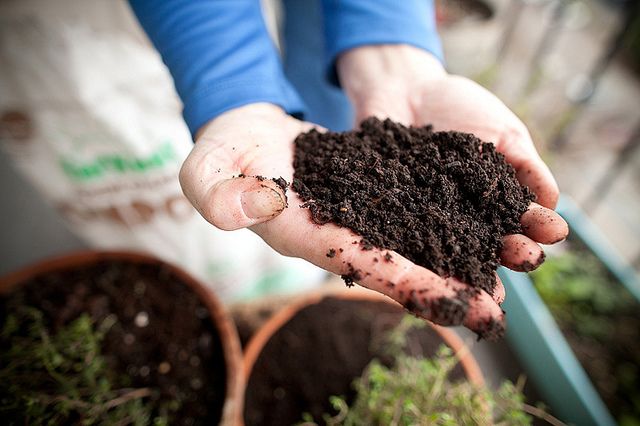
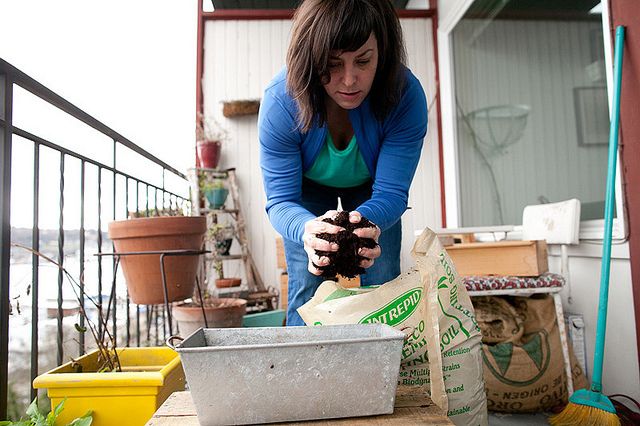
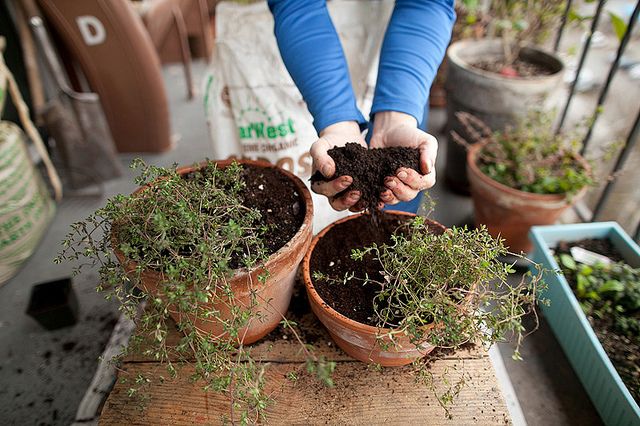
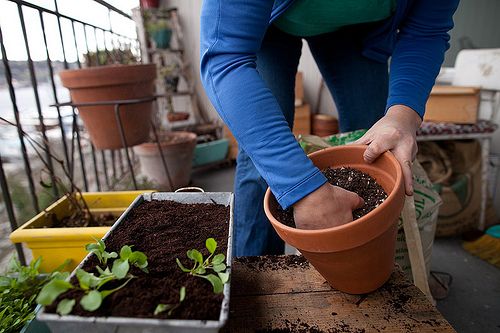
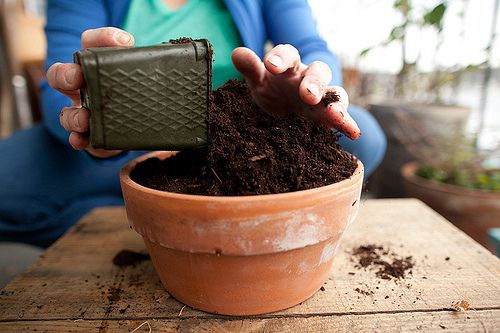
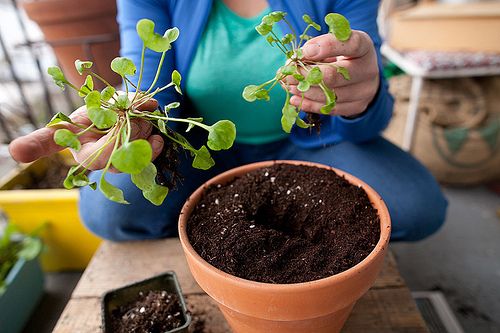
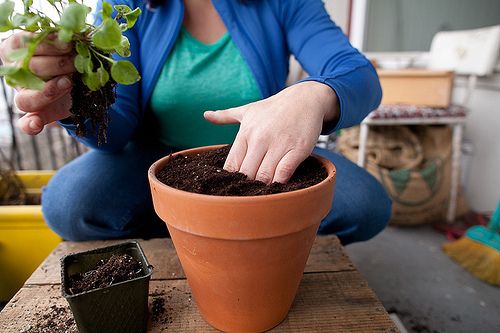
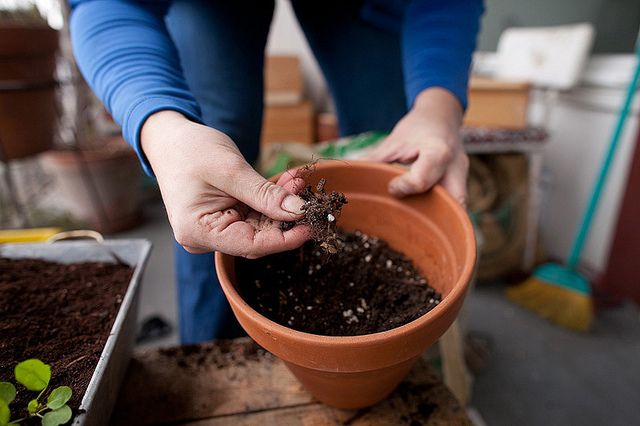

See what other Food52 readers are saying.